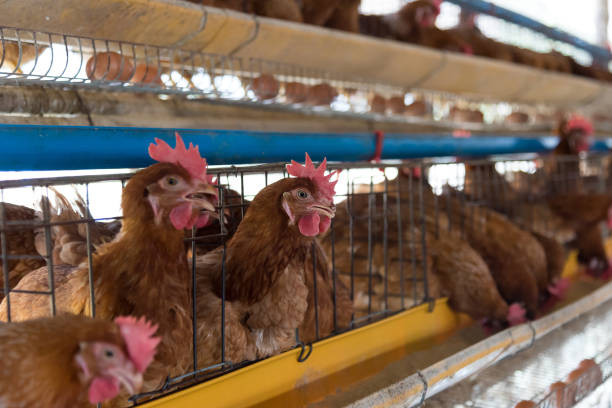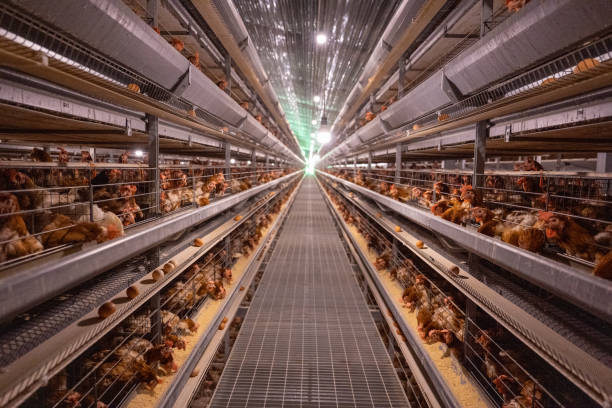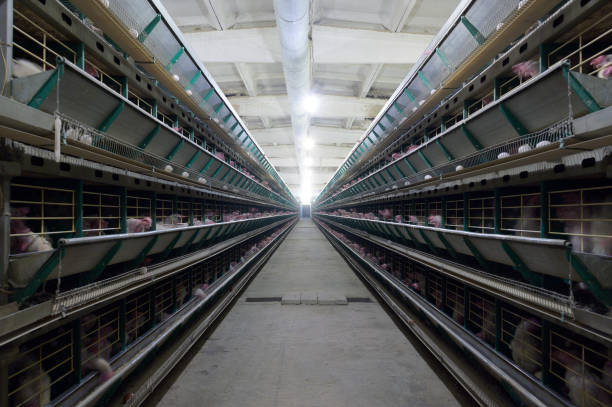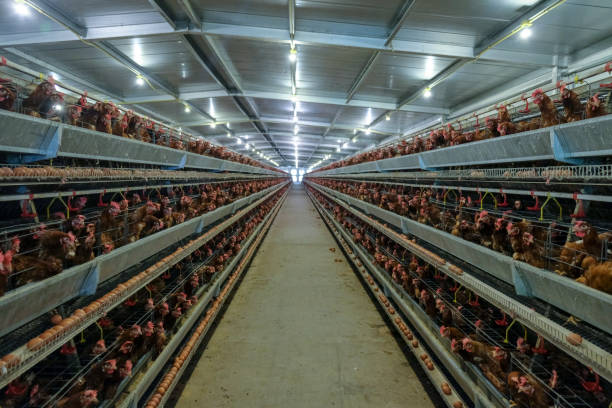
Data-Driven Success: Building a Robust Chicken Farm Management Plan in Uganda
Data-Driven Success: Building a Robust Chicken Farm Management Plan in Uganda
Uganda’s poultry industry is brimming with potential. The demand for chicken meat and eggs is on the rise, fueled by a growing population and increasing urbanization. This creates exciting opportunities for farmers, but also presents significant challenges. To thrive in this competitive landscape, relying on gut feeling alone is no longer enough. A robust chicken farm management plan, built on data and analysis, is crucial for success.
This article delves into the key elements of crafting such a plan, specifically tailored for the Ugandan context. We’ll explore how data can inform everything from breed selection and feed management to disease prevention and marketing, ultimately leading to increased profitability and sustainability for your chicken farm.
**Understanding the Ugandan Poultry Landscape**
Before diving into the specifics of a management plan, it’s vital to understand the unique characteristics of the Ugandan poultry industry. This includes:
* **Market Dynamics:** What are the current prices for chicken meat and eggs in different regions of Uganda? What are the consumer preferences in terms of size, quality, and breed? Understanding these market dynamics will influence your production goals and marketing strategies.
* **Common Breeds:** Which breeds are most popular and perform best in Uganda’s climate? Consider factors like disease resistance, growth rate, egg production, and feed conversion ratio. Local knowledge and research are key here.
* **Feed Availability and Cost:** Feed is a significant expense in poultry farming. Assess the availability and cost of different feed ingredients in your area. Explore options for locally sourced alternatives to reduce costs.
* **Disease Challenges:** What are the most prevalent poultry diseases in Uganda? Understanding the risks and implementing preventative measures is crucial for minimizing losses.
* **Regulatory Environment:** Are there any specific regulations or standards related to poultry farming in Uganda? Ensure your operation complies with all relevant laws.
By gaining a firm grasp of these factors, you can tailor your management plan to the specific realities of the Ugandan poultry industry.
**The Foundation: Data Collection and Analysis**
The cornerstone of any successful management plan is accurate and consistent data collection. This information provides insights into your farm’s performance, enabling you to identify areas for improvement and make informed decisions. Here are some essential data points to track:
* **Production Data:**

* **Egg Production:** Daily or weekly egg count per hen, egg weight, egg quality (shell strength, yolk color).
* **Growth Rate:** Weekly weight measurements of birds, feed consumption, feed conversion ratio (FCR).
* **Mortality Rate:** Daily or weekly record of bird deaths, including the suspected cause.
* **Hatchability:** Percentage of fertile eggs that hatch successfully (if you are involved in hatching).
* **Financial Data:**
* **Feed Costs:** Cost per bag or ton of feed, cost per bird.
* **Medication Costs:** Cost of vaccines, antibiotics, and other medications.
* **Labor Costs:** Wages paid to farm workers.
* **Utility Costs:** Electricity, water, and heating expenses.
* **Sales Revenue:** Income from the sale of eggs and/or meat.
* **Environmental Data:**
* **Temperature:** Daily temperature inside the chicken house.
* **Humidity:** Daily humidity levels inside the chicken house.
* **Water Consumption:** Daily water usage.
Collecting this data manually can be time-consuming. Consider investing in simple record-keeping tools like spreadsheets or, if your budget allows, poultry management software. The goal is to have a readily accessible and organized database.
Once you have collected the data, it’s crucial to analyze it. Look for trends, patterns, and anomalies. For example:
* Is egg production declining in a particular flock?
* Is the feed conversion ratio higher than expected?
* Are there seasonal variations in mortality rates?
By identifying these trends, you can investigate the underlying causes and take corrective action. For instance, a decline in egg production could indicate a nutritional deficiency or a disease outbreak. A high feed conversion ratio might suggest poor feed quality or inadequate housing conditions.
**Key Components of a Data-Driven Management Plan**
A comprehensive chicken farm management plan should address the following key areas:
**1. Breed Selection:**
Choosing the right breed is paramount. Research breeds that are well-suited to Uganda’s climate and market demands. Data on growth rate, egg production, disease resistance, and feed efficiency should guide your decision. Consider:
* **Layers:** For egg production, breeds like the Lohmann Brown, Hy-Line Brown, and ISA Brown are popular choices.
* **Broilers:** For meat production, breeds like the Cobb 500, Ross 308, and Arbor Acres are commonly used.
* **Dual-Purpose Breeds:** Breeds like the Kuroiler can provide both eggs and meat, although their production levels may be lower than specialized breeds.

Collect data on the performance of different breeds in your specific environment. This will allow you to refine your breed selection over time.
**2. Housing and Environment Management:**
Proper housing is essential for bird health and productivity. The chicken house should provide:
* **Adequate Space:** Overcrowding can lead to stress, disease, and reduced performance. Follow recommended stocking densities for your chosen breed.
* **Ventilation:** Good ventilation is crucial for removing ammonia and moisture, preventing respiratory diseases.
* **Temperature Control:** Maintain optimal temperatures for your birds. Use heating or cooling systems as needed, especially during extreme weather conditions.
* **Lighting:** Provide adequate lighting to stimulate egg production in laying hens. Follow recommended lighting schedules.
* **Biosecurity:** Implement strict biosecurity measures to prevent the introduction and spread of diseases. This includes controlling access to the farm, disinfecting equipment, and practicing proper hygiene.
Monitor environmental data (temperature, humidity, ammonia levels) regularly and adjust your management practices accordingly.
**3. Feed Management:**
Feed accounts for a significant portion of the total cost of production. Optimize feed management by:
* **Using High-Quality Feed:** Choose a commercially available feed that meets the nutritional requirements of your birds.
* **Formulating Your Own Feed:** If feasible, consider formulating your own feed using locally available ingredients. This can reduce costs, but requires careful attention to nutritional balance.
* **Providing Adequate Feed and Water:** Ensure that birds have access to fresh, clean feed and water at all times.
* **Monitoring Feed Consumption:** Track feed consumption closely to identify any problems with appetite or feed quality.
* **Adjusting Feed Rations:** Adjust feed rations based on the age, weight, and production stage of your birds.
Experiment with different feeding strategies and monitor their impact on growth rate, egg production, and feed conversion ratio.
**4. Health Management:**
Disease prevention is crucial for minimizing losses. Implement a comprehensive health management program that includes:
* **Vaccination:** Vaccinate birds against common poultry diseases in Uganda, such as Newcastle disease, infectious bronchitis, and Gumboro disease.
* **Prophylactic Medication:** Use antibiotics judiciously to prevent bacterial infections.
* **Regular Monitoring:** Monitor birds for signs of illness, such as decreased appetite, lethargy, and respiratory distress.
* **Prompt Treatment:** Treat sick birds promptly to prevent the spread of disease.
* **Biosecurity:** Maintain strict biosecurity measures to prevent the introduction of disease.
* **Post-Mortem Analysis:** Conduct post-mortem examinations on dead birds to determine the cause of death and implement appropriate preventative measures.
Keep detailed records of all vaccinations, medications, and disease outbreaks. Analyze this data to identify patterns and improve your health management strategies.
**5. Waste Management:**
Proper waste management is essential for preventing environmental pollution and maintaining good hygiene. Develop a plan for:
* **Manure Collection:** Collect manure regularly to prevent the build-up of ammonia and other harmful gases.

* **Manure Storage:** Store manure properly to prevent contamination of water sources.
* **Manure Disposal:** Dispose of manure in an environmentally friendly manner. Options include composting, using it as fertilizer, or selling it to other farmers.
Monitor ammonia levels in the chicken house and adjust your waste management practices accordingly.
**6. Marketing and Sales:**
Developing a strong marketing and sales strategy is crucial for maximizing profits. Consider:
* **Identifying Your Target Market:** Determine who your customers are and what their needs are.
* **Developing a Brand:** Create a brand that differentiates your products from the competition.
* **Setting Competitive Prices:** Set prices that are competitive but also profitable.
* **Building Relationships with Customers:** Build strong relationships with your customers to ensure repeat business.
* **Exploring Different Sales Channels:** Explore different sales channels, such as farmers’ markets, supermarkets, and restaurants.
Collect data on sales volume, prices, and customer feedback. Use this information to refine your marketing and sales strategies.
**7. Financial Management:**
Effective financial management is essential for ensuring the long-term sustainability of your farm. This includes:
* **Budgeting:** Develop a detailed budget that outlines all income and expenses.
* **Record-Keeping:** Keep accurate records of all financial transactions.
* **Cost Analysis:** Analyze your costs to identify areas where you can reduce expenses.
* **Profitability Analysis:** Calculate your profitability to assess the financial performance of your farm.
* **Financial Planning:** Develop a long-term financial plan that includes strategies for reinvesting profits and managing debt.
Use financial data to track your progress and make informed decisions about investments and expansions.
**Continuous Improvement and Adaptation**
The poultry industry is constantly evolving. New breeds, feed technologies, and disease challenges emerge regularly. Therefore, your management plan should be a living document that is continuously reviewed and updated based on data and experience.
* **Regularly Review Your Data:** Analyze your data to identify trends, patterns, and areas for improvement.
* **Experiment with New Technologies:** Evaluate new technologies and management practices that could improve your farm’s performance.
* **Seek Expert Advice:** Consult with poultry experts, veterinarians, and agricultural extension officers to get advice on best practices.
* **Attend Training Programs:** Participate in training programs to stay up-to-date on the latest developments in the poultry industry.
* **Adapt to Changing Market Conditions:** Be prepared to adapt your production and marketing strategies to changing market conditions.
**Conclusion**
Building a robust chicken farm management plan in Uganda based on data-driven insights is essential for maximizing profitability, ensuring sustainability, and navigating the complexities of the modern poultry industry. By embracing data collection, analysis, and continuous improvement, you can transform your chicken farm from a traditional operation into a thriving, competitive, and successful enterprise. Remember that success is not a destination, but a journey. Constantly strive to learn, adapt, and improve your management practices, and you will be well-positioned to thrive in the ever-changing landscape of the Ugandan poultry industry.
